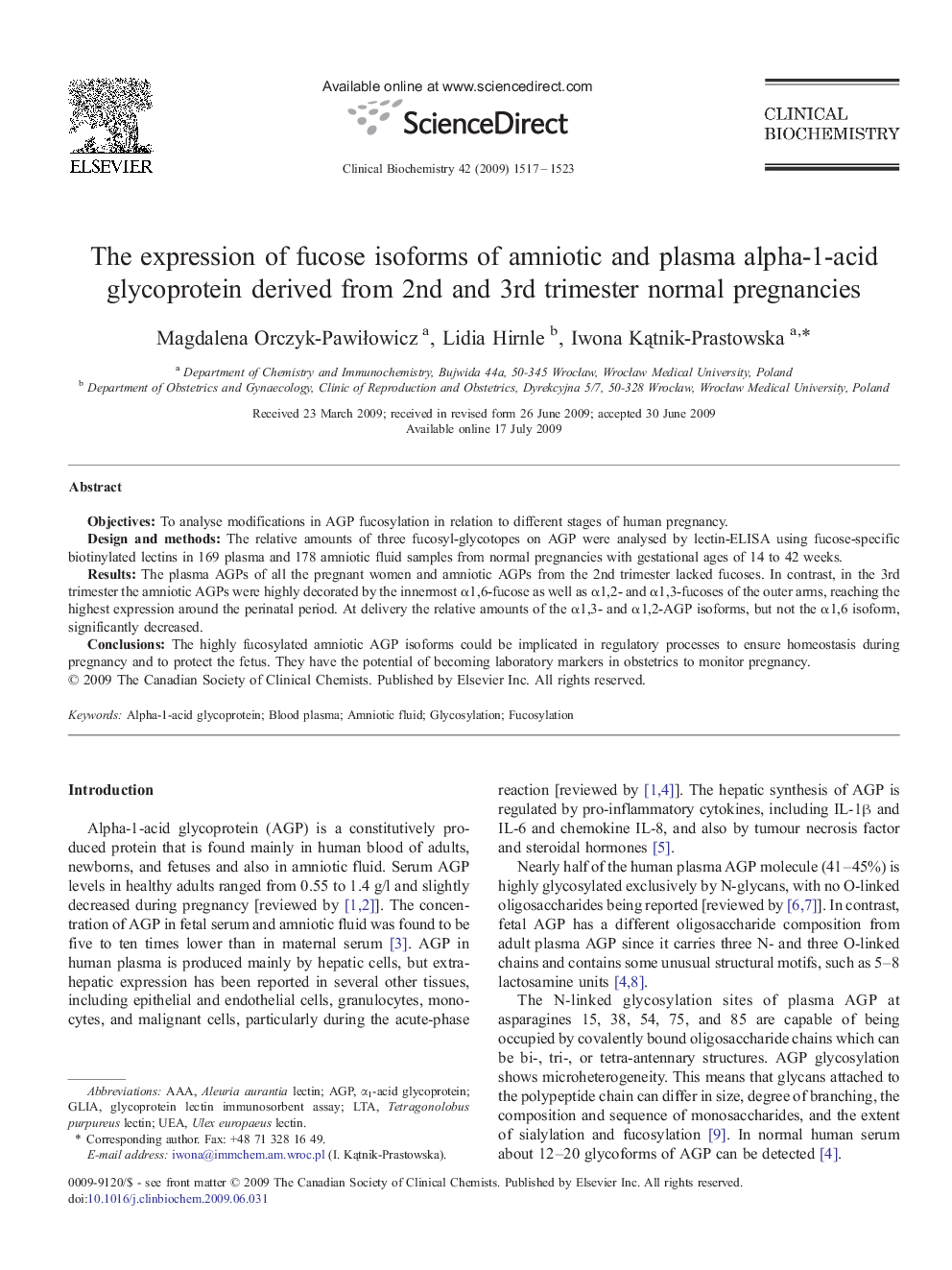| Article ID | Journal | Published Year | Pages | File Type |
|---|---|---|---|---|
| 1969472 | Clinical Biochemistry | 2009 | 7 Pages |
ObjectivesTo analyse modifications in AGP fucosylation in relation to different stages of human pregnancy.Design and methodsThe relative amounts of three fucosyl-glycotopes on AGP were analysed by lectin-ELISA using fucose-specific biotinylated lectins in 169 plasma and 178 amniotic fluid samples from normal pregnancies with gestational ages of 14 to 42 weeks.ResultsThe plasma AGPs of all the pregnant women and amniotic AGPs from the 2nd trimester lacked fucoses. In contrast, in the 3rd trimester the amniotic AGPs were highly decorated by the innermost α1,6-fucose as well as α1,2- and α1,3-fucoses of the outer arms, reaching the highest expression around the perinatal period. At delivery the relative amounts of the α1,3- and α1,2-AGP isoforms, but not the α1,6 isoform, significantly decreased.ConclusionsThe highly fucosylated amniotic AGP isoforms could be implicated in regulatory processes to ensure homeostasis during pregnancy and to protect the fetus. They have the potential of becoming laboratory markers in obstetrics to monitor pregnancy.
